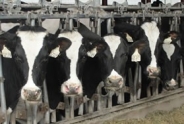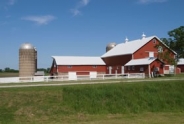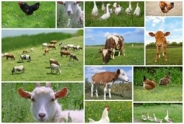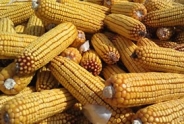Selling Turkeys This Year? Reminders for Labeling and Handling
Amy Barkley, Team Leader & Livestock Specialist
Southwest New York Dairy, Livestock and Field Crops Program
Selling Turkeys This Year? Reminders for Labeling and Handling
By Amy Barkley, Livestock Specialist SWNYDLFC Team
As you're planning your turkey harvest and sales, keep safe handling, proper labeling, and regulations for sales in mind to enjoy a stress-free and food safety-forward holiday season.
Processing Regulations:
Farmers can either process turkeys on their farm or through a certified 5A Small Enterprise exempted processor. If the goal is to sell the turkeys, keep in mind that not all 5A certified facilities are permitted to process for resale. Many only process poultry for the grower's home use. Verify with your processor that they have the Small Enterprise exemption.
If processing on-farm, you are permitted to process up to 250 turkeys per year per farm. If you process other poultry on-farm, then each of those counts as ¼ of a turkey. In other words, the rule states that you can process up to 1,000 poultry on-farm, where 1 turkey is equal to 4 chickens. If you end up sending poultry to a processor in addition to processing on-farm, then only the number that you process on-farm counts towards the total. If you're processing on-farm for home use, those birds aren't counted in your processing total.
There are best management practices associated with processing poultry on-farm to achieve quality and food safety. Those can be found in the Cornell On-Farm Poultry Slaughter Guidelines: https://smallfarms.cornell.edu/resources/guides/on-farm-poultry-slaughter-guidelines/
Packaging:
Poultry processed on-farm must be packaged in either butcher paper, loose bags, or heat shrink bags. Vacuum packing is not allowed. Some processing facilities provide the option of vacuum packing.
Carcasses need to have an internal temperature of 45 degrees F or less within 4 hours of being dispatched. This is ideally achieved by cooling the carcasses in an ice slurry. Packaging warm carcasses can lead to internal decay if placed in a fridge or standard freezer.
Labeling:
New York State has adopted federal labeling requirements. This is to allow for full transparency of the product as well as providing contact information for traceability purposes. All poultry needs to be labeled with the following:
- Product name using the species and part (whole turkey, whole turkey with giblets, turkey breast, turkey drumsticks, etc.)
- Inspection legend if processed at a 5A facility
- Exempted notation if processed on-farm. That exact statement is, "Exempted — P.L. 90-492"
- Farm name and address
- Packed on date
- Sell by date, where fresh turkeys must be marked that they are to be frozen within 4 days of processing. Frozen meat does not require a sell-by date, though most producers aim to sell their products within a year for best quality.
- If selling by the pound, price per pound, where you can only sell by the pound if using an Dept of Weights and Measures certified and inspected scale.
- If selling by the package rather than by the pound, a price per package.
- Safe Handling instructions, where the required wording is:
- SAFE HANDLING INSTRUCTIONS
- Keep refrigerated or frozen. Thaw in refrigerator or microwave.
- Keep raw meat and poultry separate from other foods. Wash working surfaces (including cutting boards), utensils, and hands after touching raw meat or poultry.
- Cook thoroughly.
- Keep hot foods hot. Refrigerate leftovers immediately or discard.
Claims cannot be made on the package without justification. Comparative wording such as "healthier" or "fresher" aren't allowed. Furthermore, neither are claims of altered nutritional values. If the meat is tested for nutrition at a certified laboratory to make a claim, a nutrition label is required in addition to the claim. Otherwise, a nutrition label is not required.
Do not use any certified seals on the carton unless you have a current certification. This applies most often to organic or welfare claims. However, you can use descriptors of your management practice on the cartons, such as "turkeys raised on pasture" or "non-GMO fed".
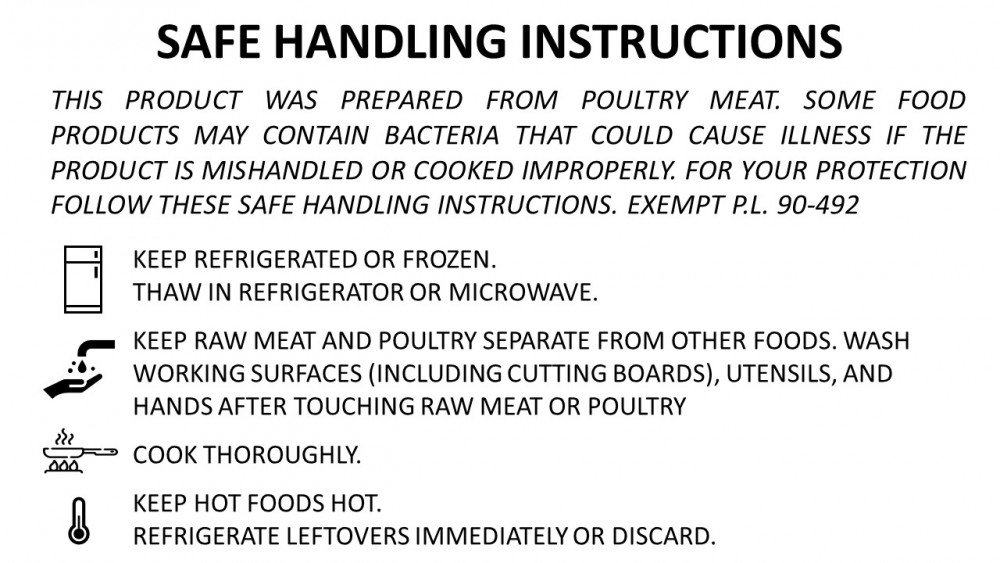
Example of a Safe Handling Instructions label.

Example of a complete poultry label (if you are affixing the safe handling instructions label separately) for on-farm processed poultry that allows flexibility in whether the product is fresh or frozen, and sold by the pound or by the item.
Transportation:
Keep fresh poultry below 45 degrees F and frozen poultry below 32 degrees F during transport. This is best achieved by mobile coolers or freezers. Fully frozen poultry can last for a short time in coolers packed with ice, especially if they are coming out of a deep freeze (less than 0 degrees??°F). Fresh poultry should be packed in an abundance of loose ice to maintain proper food safe temperatures. Ice packs don't provide enough cooling power to keep fresh poultry cool, especially if it's warm and sunny.
Sales:
Turkeys that have been processed on-farm can only be sold to the end consumer, though you can make sales off the farm, through a farm stand or store you own, or through a farmer's market. If your turkeys have been processed by a 5A Small Enterprise Exempt facility, you can sell them to a wider range of customers, including direct sales, sales at stores other than one you own, hotels, restaurants, and institutions.
If you have any questions about poultry processing or regulations, reach out to Amy Barkley at 716-640-0844 or amb544@cornell.edu.
Upcoming Events
Crops, Cows & Critters - Southwest New York Dairy, Livestock & Field Crops Newsletter Sponsorship
December 19, 2025
Our two forms of publications feature research-based and timely information from our four specialists, listed to the right, along with local event notifications and Cornell University outreach. This information is provided to participants who range from dairy, livestock, and field crops producers to agricultural suppliers and consultants.
Weekly Email Update: Shared with 625+ households who have signed up with our program.
Monthly Paper Mailer: To reach our stakeholders and farmers who lack internet access, we send out a monthly mailer where your company's logo and contact information would be featured with a mailing list of 330+ households.
If you sponsor our weekly and monthly publications you reach approximately 955 households.
Visit our website to view our newsletters!
2025 Cornell Food Beverage & Animal Feed Manufacturer Survey
December 19, 2025
Industry and Educational Advocates for New York State's Food, Beverage, and Animal Feed Manufacturing industries:
As you know, NYS has a diverse food and beverage manufacturing industry, in both the types of industries that exist and the wide distribution of firms by scale. Many manufacturing firms have strong backward linkages to agricultural production sectors in the state that support both farm-level and downstream food industry firms and consumers. In collaboration with the New York State Department of Agriculture and Markets, a team from Cornell University's Charles H. Dyson School of Applied Economics and Management has recently rolled out the 2025 New York State Food, Beverage, and Animal Feed Manufacturer Survey. The industry will benefit from an updated assessment of the industry that informs private and public investments and opportunities to support firm growth and improved profitability.
Boots in the Barn: Cornell Dairy Research Updates
January 13, 2026
January 20, 2026
January 27, 2026
February 3, 2026
February 10, 2026
February 17, 2026
February 24, 2026
Join us for some or all!
Announcements
No announcements at this time.


